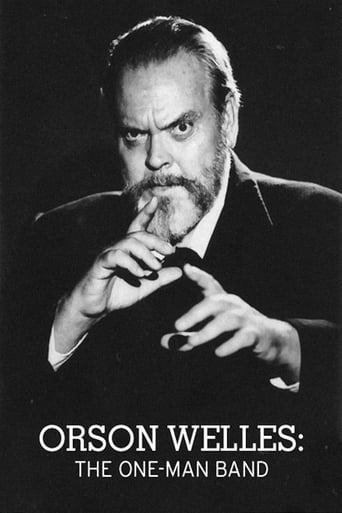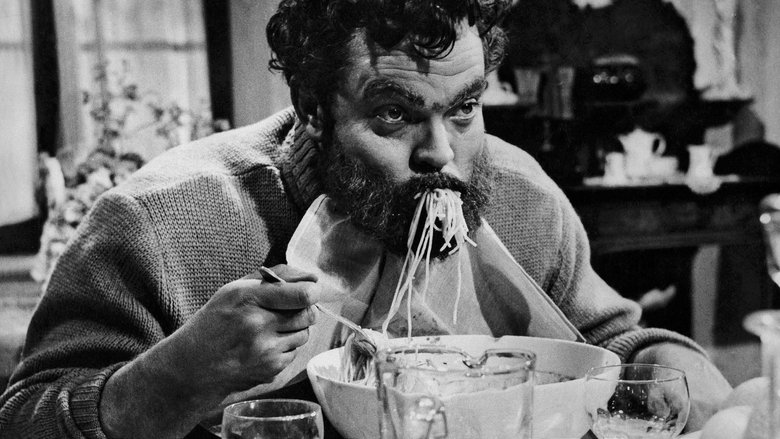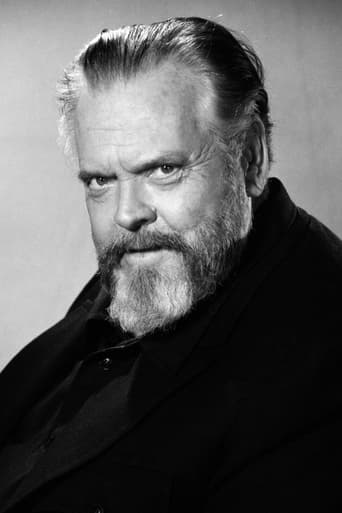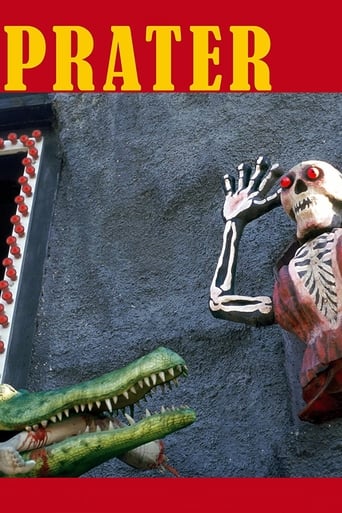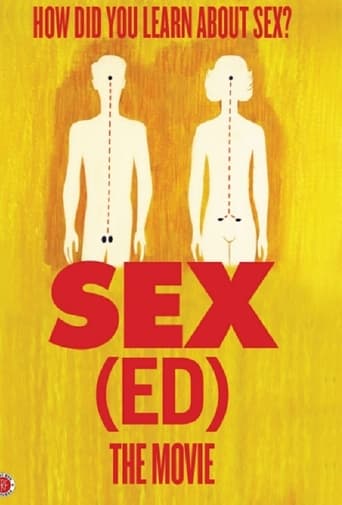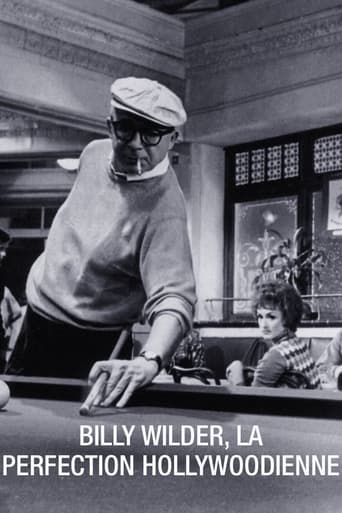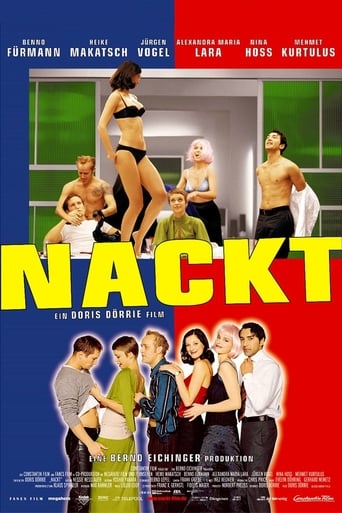Orson Welles: The One-Man Band (1995)
Orson Welles' archives of unfinished/never released movies and the last years of his life from the perspective of Oja Kodar (life and artistic partner of Orson Welles in his last years).
Watch Trailer
Free Trial Channels
Cast


Similar titles
Reviews
Thanks for the memories!
The film makes a home in your brain and the only cure is to see it again.
A film of deceptively outspoken contemporary relevance, this is cinema at its most alert, alarming and alive.
The tone of this movie is interesting -- the stakes are both dramatic and high, but it's balanced with a lot of fun, tongue and cheek dialogue.
Gary Graver and Oja Kodar were Orson Welles' constant companions during the last years of his life. Graver was his photography director for American films and Kodar was his live in girlfriend. In One Man Band, the focus is usually on the films Oja performed in. The secondary message seems to be Oja wants fame and recognition because she was Welles' lover and wants to use him as a stepping stone to promote her own success. Shown is an extended promo for F for Fake where Oja is prancing about semi nude or in sexy clothes every minute of the ten minutes or so of the rejected trailer. The film in fact was a boring comparison of a famous art forger and Clifford Irving who faked Howard Hughes' biography. My main disappointment is that more of Welles' legendary unfinished film was not shown, The Other Side of the Wind. The scene shown is a short semi nude clip featuring Oja again. Gary Graver was said to have a complete working print of the movie, but his documentary featured little or nothing from it at all. A truckload of films are retrieved, but Oja claims to have just a few scenes. This is very hard for me to believe, indeed. A complete film from either Graver or Kadar kept separately from the negative stored in a vault in France seems to have vanished.
This is a loving film essay on Orson Welles and his unfinished films. Its an interesting look at the man who was just trying to make the films he wanted to on his own terms. Made with the assistance of Welles' longtime companion Oja Kodar this film lets us see a number of his unrealized projects for the first time. Its a treat for anyone who has been interested in Orson Welles and heard stories of these lost treasures; or for any one curious to what end he was putting the money got from his numerous film and television roles. While I'm not sure what I would have thought of some of the films (The Dreamers for example) I find that I'm very interested in where he was going with other (his Moby Dick, which consisted of him simply reciting passages from the book is an interesting idea). I especially loved some of the short humorous bits that Welles put together, his Churchill film is very funny, as his is bit with two English tailors. As a person who has been very critical of Welles of late, due in large part to extreme disillusionment with his Don Quixote (which I found to be a crashing bore) I find that this film re-awakened my respect for the man. Its not a perfect film, most of the pieces we see only awaken a desire to see more of the unfinished films and at times it seems to go on too long. Still this is a must see if you're interested in Welles or cinema, especially its lost treasures.
Orson Welles: The One-Man Band, which is one of many excellent extras on the Criterion Collection DVD edition of Welles' film F for Fake (Vérités et mensonges, 1974), is a 90-minute documentary, put together (co-directed) by Welles partner/companion Oja Kodar and filmmaker Vassili Silovic. It examines Welles' career primarily via a focus on his unfinished projects, and is of great interest to Welles fans for presenting (sometimes extended) clips of those unrealized films. Although this documentary is put together in the style of F for Fake, it's not nearly as successful artistically, which probably underscores what a genius Welles could be when he was in charge.The unfinished or lost works prominently featured include Moby Dick, The Merchant of Venice (1969), The Other Side of the Wind (1972), and a kind of surrealistic "biopic" that Welles was working on, set in London, called One Man Band. There is also a fascinating question and answer session with Welles filmed on a college campus, bits of a television show with him talking to various Muppets (it appears to be more of a talk show than something taken from The Muppet Show), a few instances of Welles performing magic tricks, and quite a few scenes filmed specifically for this documentary. The latter tend to have the best cinematography. The clips from unfinished films that Welles shot or supervised tend to not be properly processed. They need color correction; they need to be cleaned up, and so on.Just seeing the Welles film clips out of context like this tends to undermine their potential impact for me. For example, the surrealistic Merchant of Venice scenes and the bizarre sex scene from The Other Side of the Wind are both fascinating, but with improperly processed prints and with just snippets that should have arrived in a full film in the same vein, neither quite work, and in the context of this documentary, they tend to slow it down too much. The bits of Welles reading sections from Moby Dick at the camera in close-up and the brief scenes from an unrealized film called the Dreamers do not work at all for me. The snippets of One-Man Band are primarily interesting in that they amount to Welles doing his best Benny Hill impersonation.Although I was drawn to the documentary by seeing the unfinished clips, what ended up being the most significant aspect of The One Man Band for me was the exploration of Welles' difficult relationship with the film industry, his occasional bad luck (such as losing or having the negatives of Merchant of Venice stolen), his efforts to fund his projects, which tended to always surmount what he could arrange financing for, and his public comments, which mostly downplayed the unfinished works, and in which he presents himself both as a carefree, somewhat modest "artiste" and a deep pessimist. In some of these respects, Welles had a career similarity to other maverick outsider artists, such as Frank Zappa.Relatively simple shots, such as driving by the outside of the big Hollywood studios and the Director's Guild of America, have significant symbolic impact in this context, as we're seeing the "closed door" to Welles' creative ideals. There are aspects of Welles that I would have liked to see explored more in depth in this documentary, such as his visual artworks (both the works intended as ends in themselves and those intended as tools for film-making), but this is a fairly successful, if somewhat sad and disheartening look at a very unique talent.
A hugely enjoyable look at the films that were never completed by Hollywood's infant terrible, Orson Welles - while he was appearing in second-rate films (or taking tiny cameos in good films) he was chasing his dreams of making films like Moby Dick, The Merchant of Venice, and others.Here we see clips of what is left and see how the failed projects developed, grew, and ran out of money. We also see surprisingly funny stuff such as the One-Man Band segment, alongside more serious stuff like The Other Side of the Wind.As well as his lost work, this film gives an opportunity to bring sundry TV appearances together - Orson with the Muppets, doing magic tricks and recitations, and so on.

